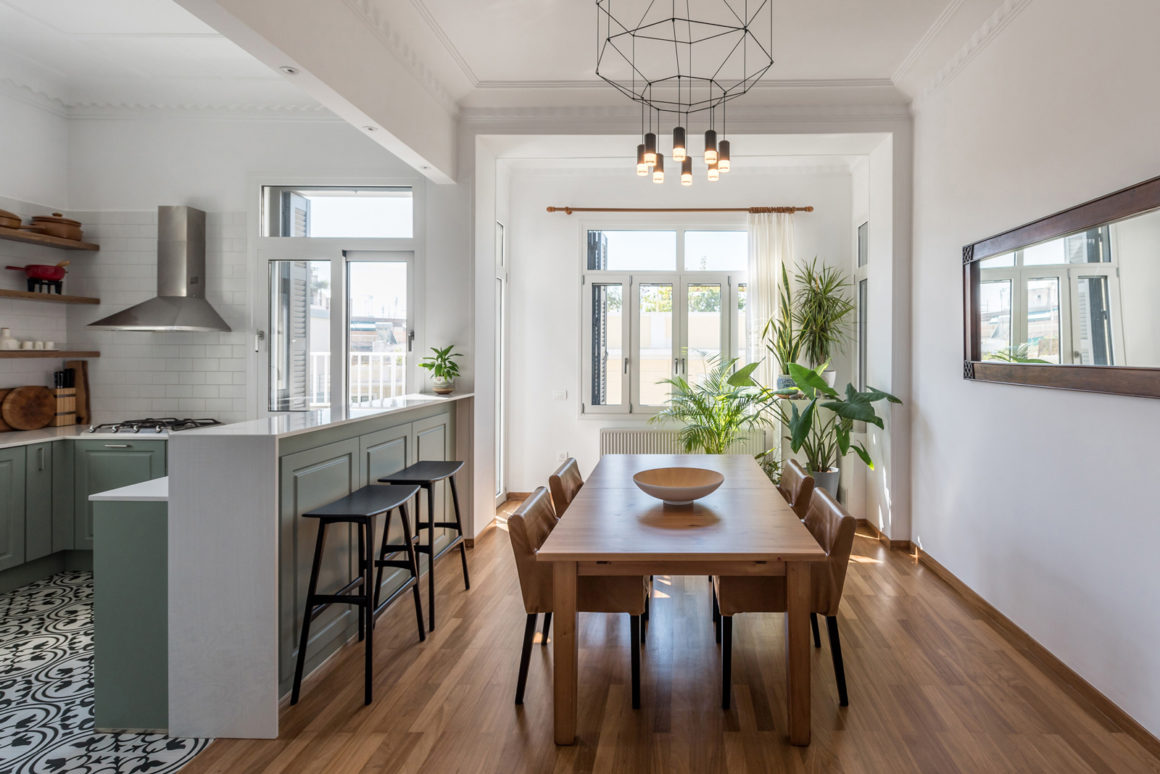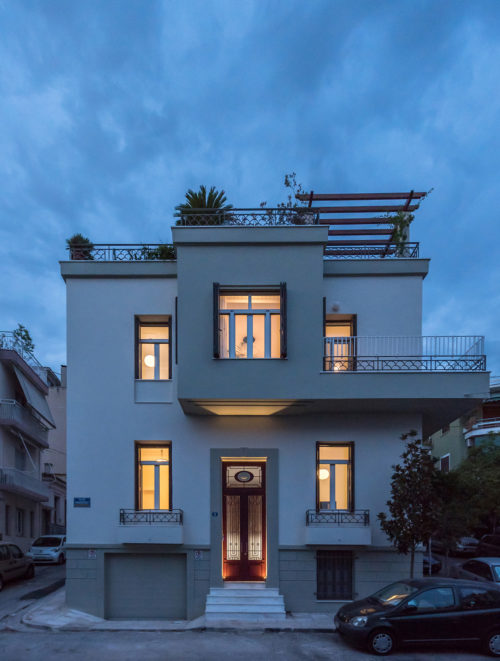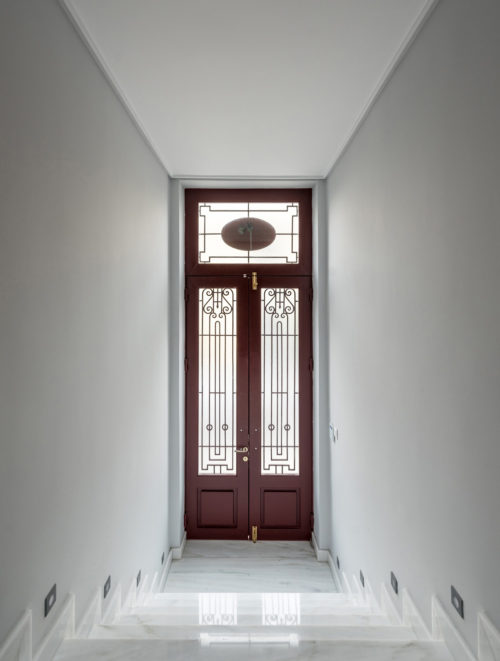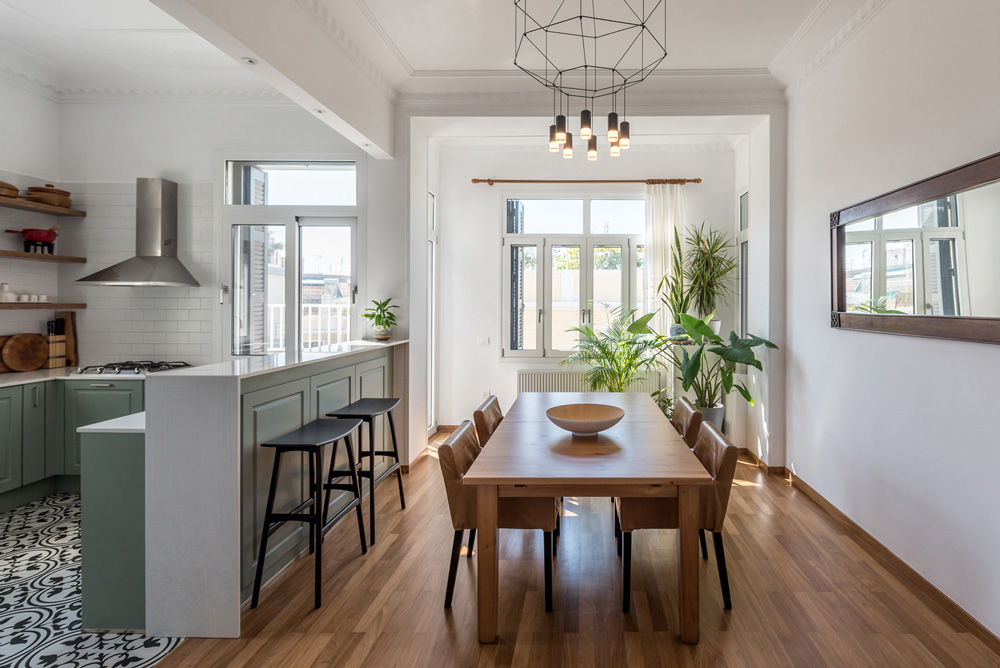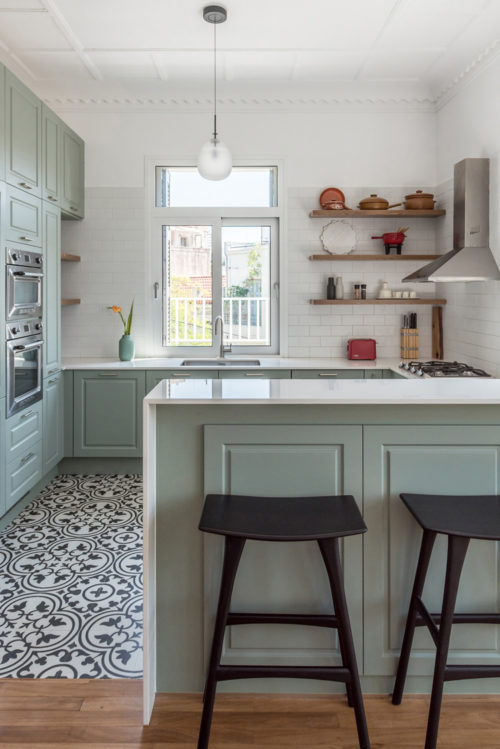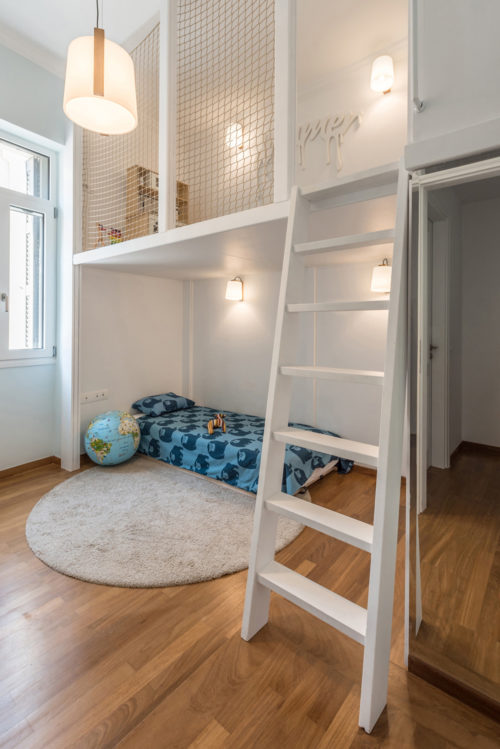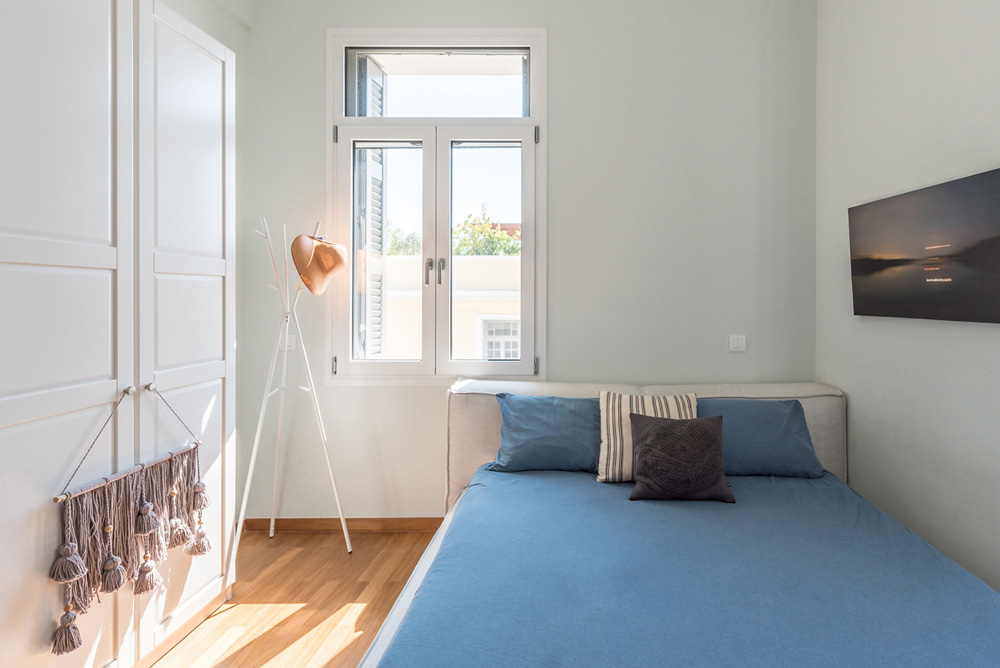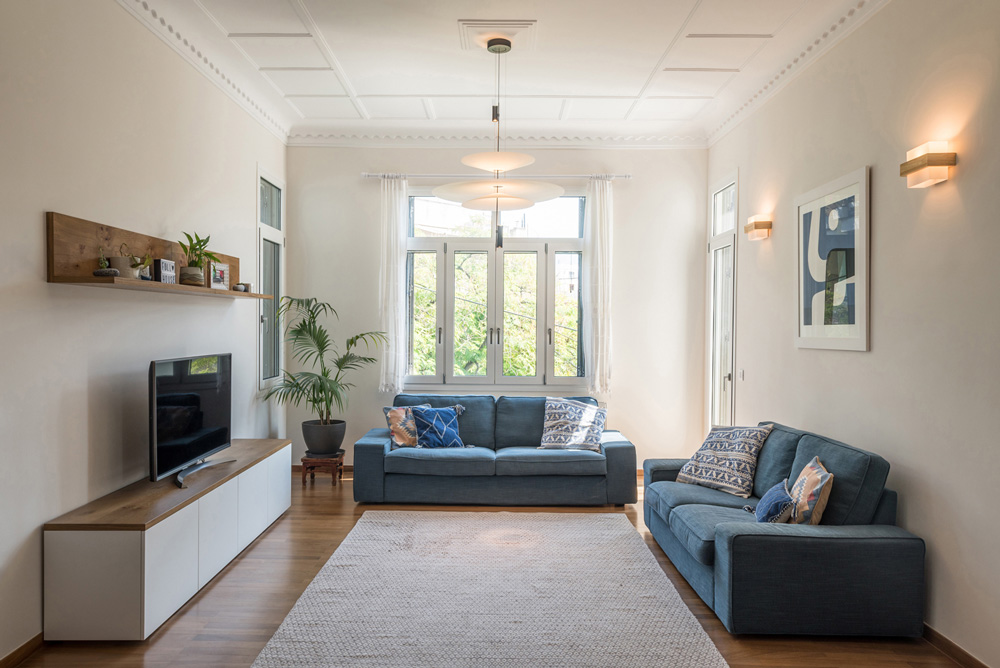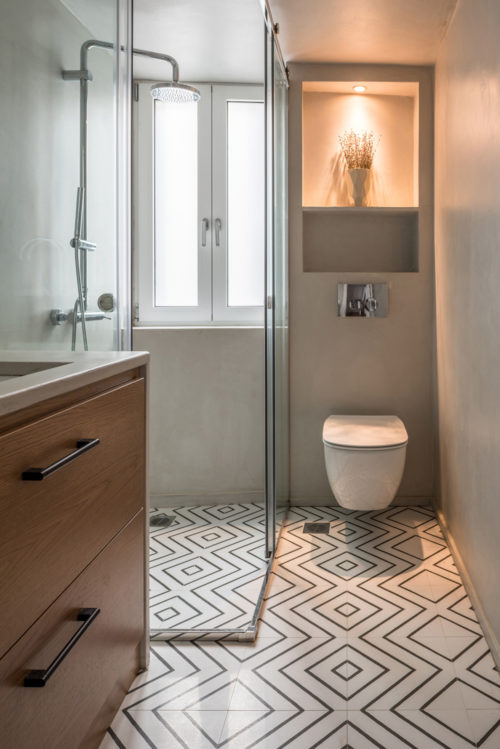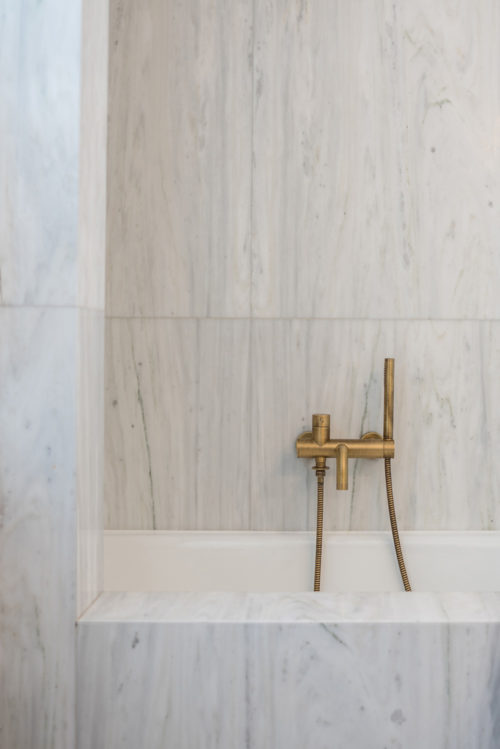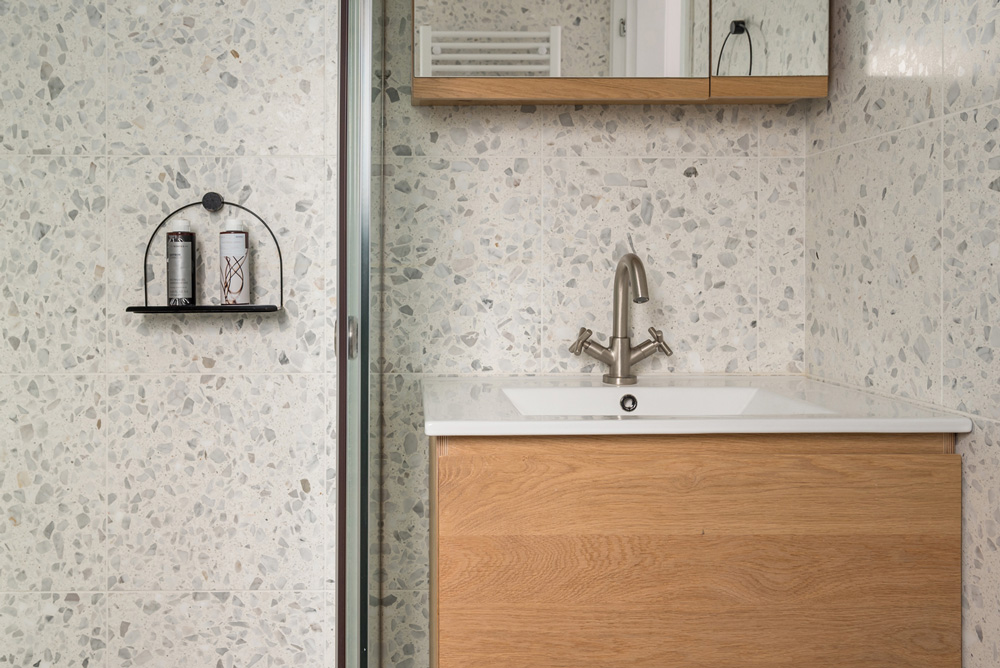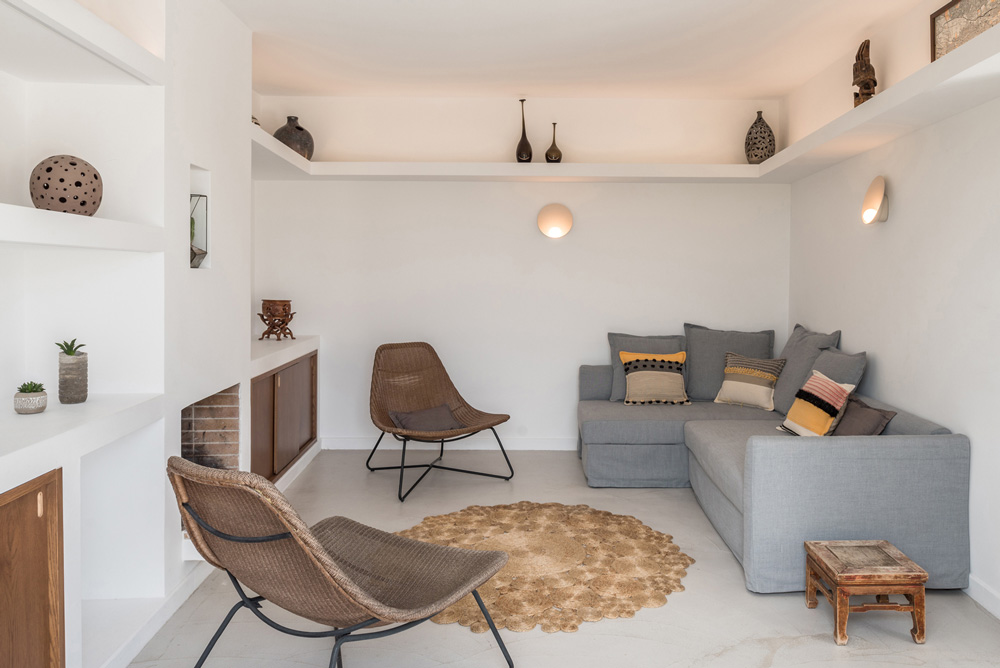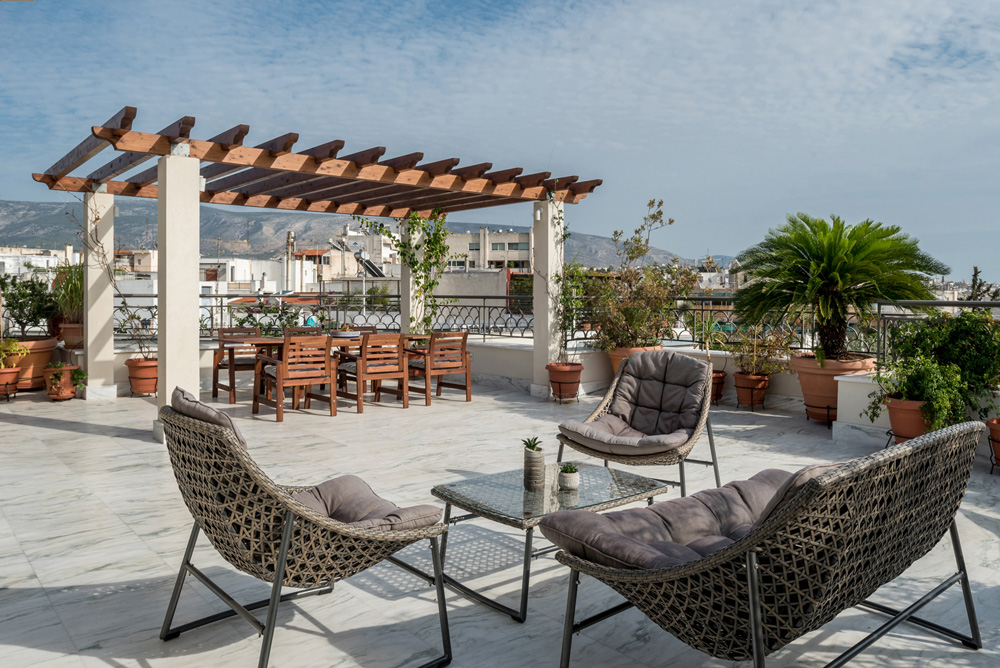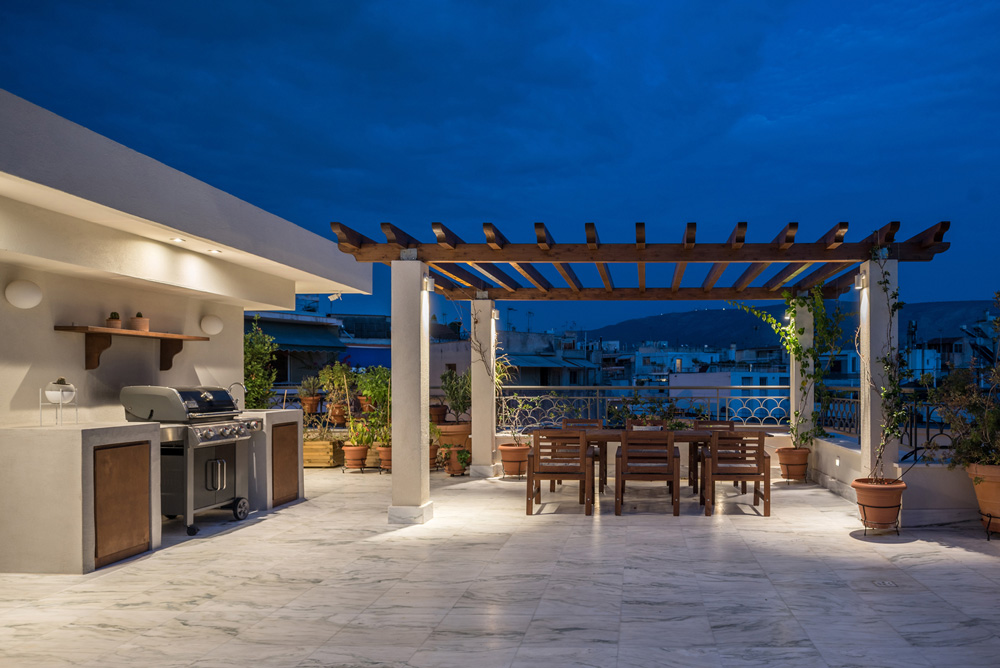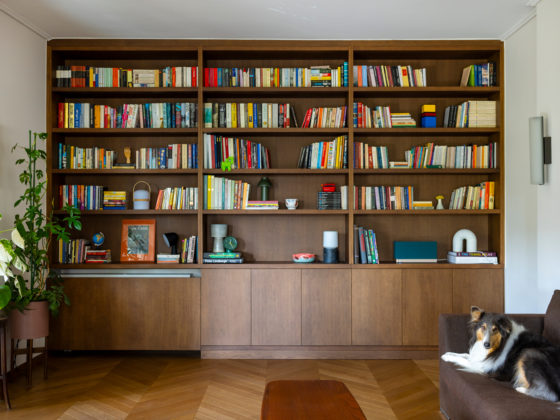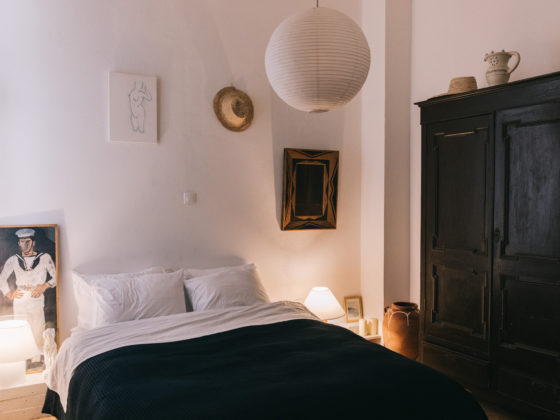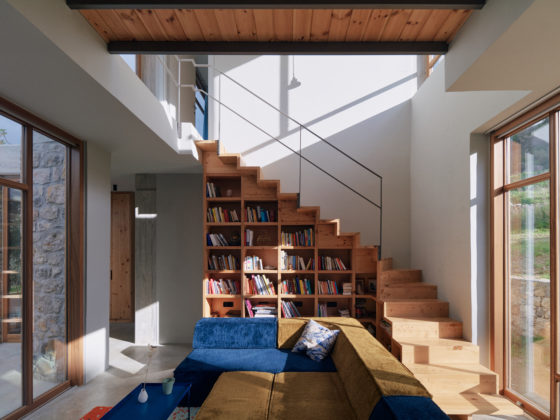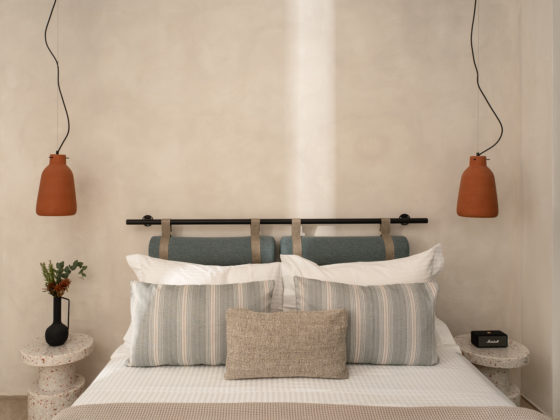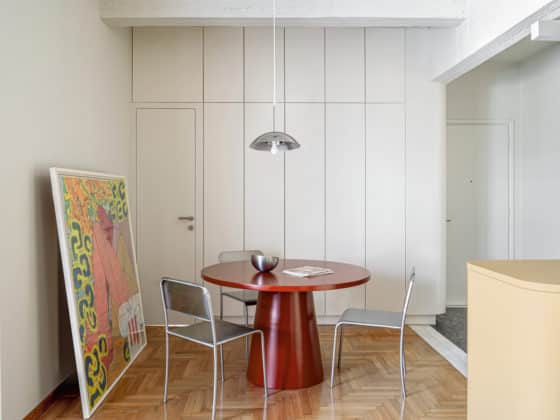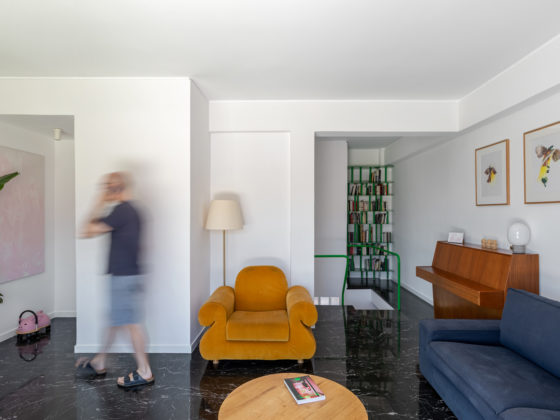“How can modern society converse dynamically with its architectural past? Where do the refined elegance of a previous era and the contemporary requirements for simplicity and chic style meet? Our architectural proposal was inspired by these very questions, when we were asked to renovate an Art Deco house in Koukaki, right next to Filopappou hill.
Built in the early 1930’s, the building is a typical example of Athenian Art Deco. The symmetrical windows that emphasize the vertical axis, combined with the richly ornamented doors and iron railings, contribute decisively to the building’s intense monumentality. In addition, the corner balcony uniting the two protrusions of the home’s exterior wall, otherwise known as erkers, along with the rooftop pergola, are quite popular architectural features during the Art Deco era in Greece.
Our architectural studio was tasked with renovating the building and developing the interiors with a contemporary feel, while preserving its historic characteristics. Keen to retain the building’s original features, the exterior was refreshed and painted different shades of almond green, which were intentionally contrasted with the dark red exterior doors and the grey framed windows. Old wooden windows were updated with identical steel ones, while the exterior doors were replicated and repositioned in place.
The building hosts two residences. On the elevated ground floor, there is a two-bedroom apartment featuring a small courtyard in the back. The building’s first and second floor houses a two-level apartment starring a spacious terrace with an oak pergola and views across the city center’s rooftops. Our interior design proposal focused primarily on the split-level apartment which was intended for a couple and their two children. The building’s Art Deco heritage, along with the neighbourhood’s vibrant and creative atmosphere, provided rich inspiration for our design.
In harmony with the owner’s wishes, we attempted to balance elegance with functionality, ensuring that all spaces were used effectively. The layout of successive rooms was maintained, and the only intervention carried out was the removal of a dividing wall between the kitchen and the dining room in order to create a large, comfortable, bright space with an open, welcoming feel and functionality. The green sage cabinets and white marble countertops are in dialogue with the surrounding floral patterned floor tiles, while wood prevails in the dining area, decorated with vital indoor plants.
Prior to its renovation, the building was found in a good but time-worn condition, so many of its original features had to be restored or replaced. Existing oak flooring was cleaned, polished and varnished, while plaster details with elegant neoclassical motifs on all the ceilings were preserved. Particular significance was given to interior design, which echoes the Art Deco style in shades of greens and blues, combined with wooden and metal details. Patterned tiles, terrazzo, marble, geometric shapes and brass details have been used as a modern interpretation of the ones that would have appeared in the original building over ninety years ago.
The residence has been transformed into a welcoming space for family and friends, and therefore all materials and furniture were chosen to create a warm and cozy ambiance for everyday family moments. Ultimately, the flexibility of the adapted new style and its ability to offer a comfortable and intimate atmosphere, respectfully redefine modern Athenian eclecticism.”
